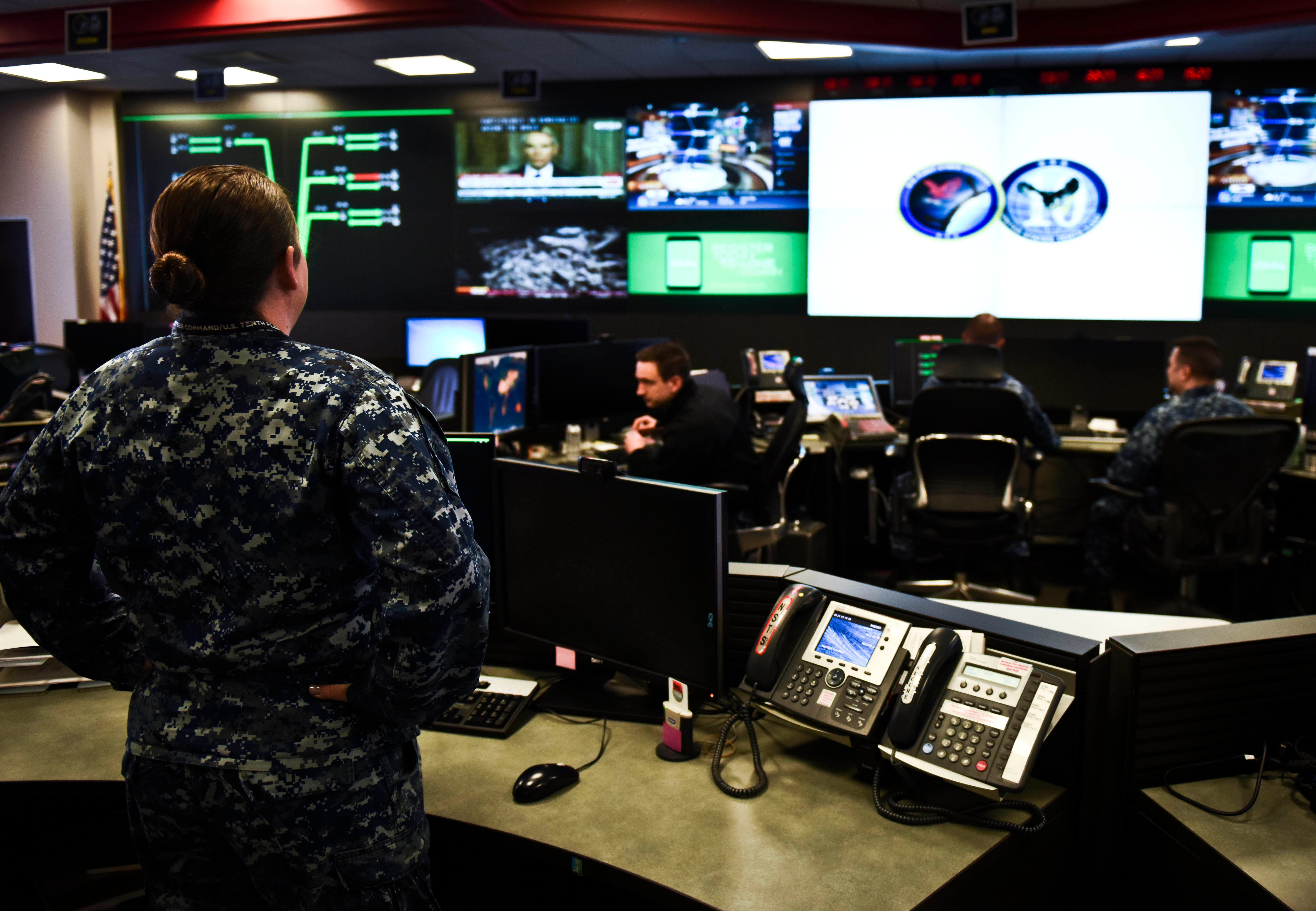
After a 44-year absence, the rank of warrant officer-1 will return to the Navy in 2019 for cyber specialists, a move signifying the great lengths the service must take to retain talent and fill leadership roles in an increasingly tight labor market.
The return of warrant officer-1 (W-1) — discontinued by the Navy in 1975 — is both a Navy bid to keep highly sought-after computer technicians and is indicative of the greater challenge facing the service as it seeks to meet growing recruiting and retention targets.
The Navy projects growing the number of all active duty sailors to nearly 344,800 within the next five years, a nearly 20,000 increase from the roughly 325,000 sailors now on active duty, according to its Fiscal Year 2019 budget request. But achieving this force level, and reaching longer-term goals to fill out a growing fleet-size will be difficult, as previously reported by USNI News.
A tight labor market means sailors can often find higher paying jobs outside the Navy, often doing the same type of work. With cyber specialists, the Navy found its ability to retain talent was especially difficult. The higher pay offered by private sector companies, often performing Navy contract, increasingly lures away sailors the Navy would eventually want to fill leadership roles, Vice Adm. Robert Burke, chief of Naval Personnel, told USNI News.
“We have kids come into the CT (cryptologic technician) program that come in with four-year degrees already,” Burke said.
The Navy’s problem is keeping these technicians and grooming them for leadership roles, Burke said. In the private sector, salaries for such cyber specialties as network and computer systems administrators, computer systems analysts, and information security analysts had median annual incomes of between $81,000 and $95,000 in 2017, according to the U.S. Bureau of Labor and Statistics.
Current pay for an E-5 with six years of service is $35,103, according to the Office of Personnel Management.
“We’re bringing in our own crypto technicians, we’re growing them, they get to E-5, E-6 (petty officer first class) and they get hired by all the defense contractors working for us. So, there’s no E-6’s around to go become eligible to be W-2s (warrant officer-2), so we’re opening it up to the E-5s to get them to stay Navy and become those managers,” Burke said.
This is at a time the Navy is paying greater attention to cyber vulnerabilities. After last summer’s deadly ship collisions involving two U.S. guided missile destroyers and two commercial ships, the Navy announced future collision investigations will include probing for evidence of cyber tampering. No evidence was found of cyber tampering during last summer’s investigations.
Only a small number of enlisted personnel will qualify for W-1, the pay still will not match what the private sector offers, and the Navy will still face tough recruiting and retention challenges. However, those sailors who do qualify for W-1 will be the ones the Navy hopes will consider remaining in the service longer because they rank offers something the private sector can’t as easily match — a quicker path to management positions.
Historically the Navy would select petty officer first class sailors to become chief warrant officer (W-2) to manage the growing cyber workforce. Yet to be considered for W-2, sailors must already have 13 years of service and these sailors reach retirement age quickly or find the lure of big private sector paydays too great, Burke said.
To qualify for consideration, sailors must at least be a petty officer second class (E-5), hold a cryptologic technician networks rating, and have between six and 12 years in service, the Navy announced.
Ideally, these sailors would promote through the ranks to become leaders in the cyber community. But many reach retirement age with their previous years in service. Allowing junior enlisted to promote to W-1, after as few as six years if they qualify, the Navy can potentially keep this expertise longer, Burke said.
“The W-1 gets them in earlier. They can go LDO (limited duty officer) or go regular commission program,” Burke said. “They’re not just managers, they become leaders.”





